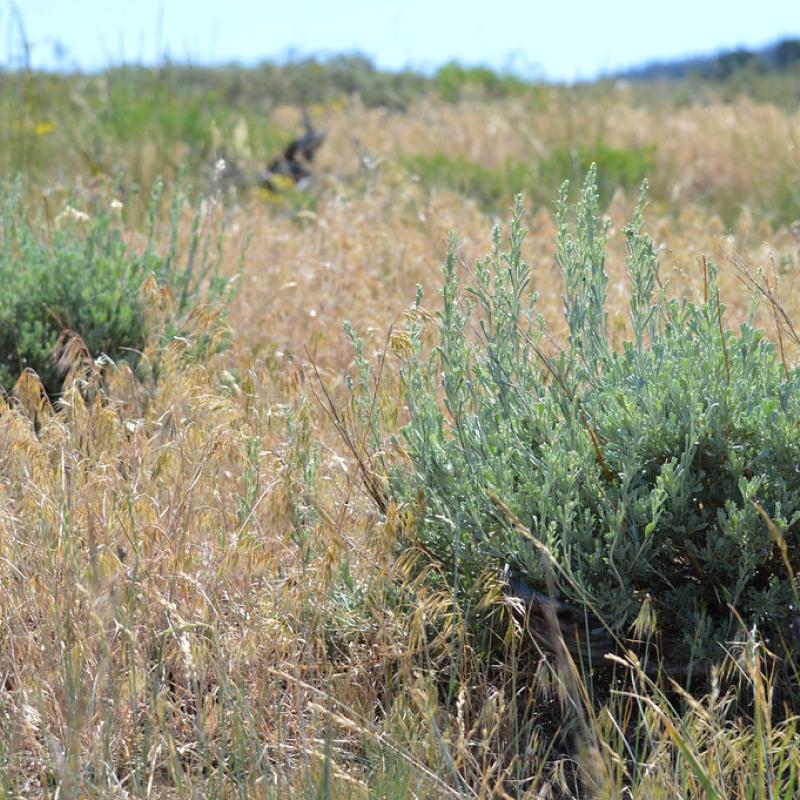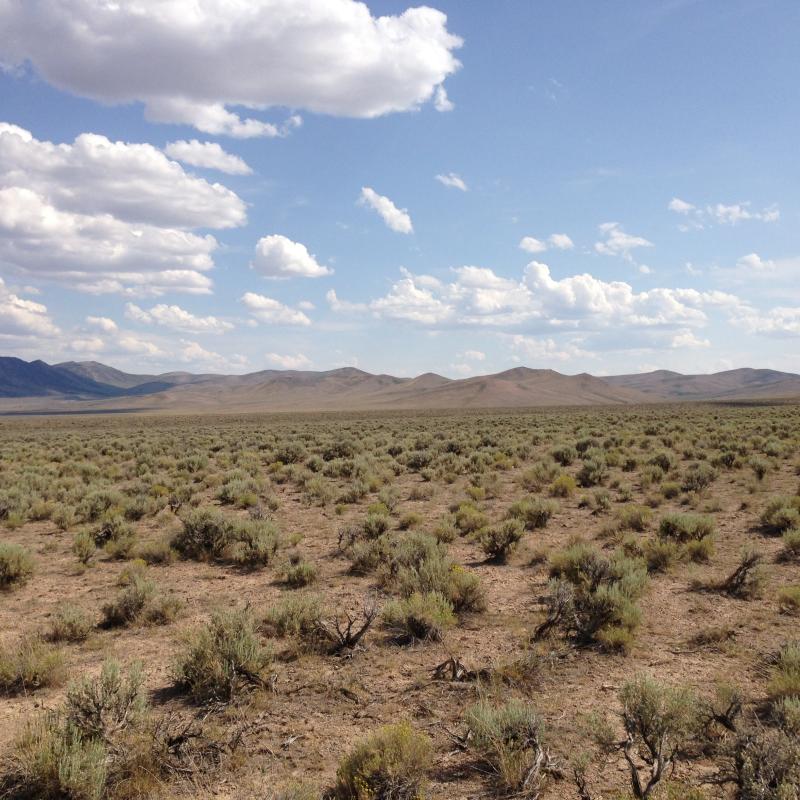Cold Calling Can Lead to Impactful Research
A behind-the-scenes look at Mahood et al. (2021)

Two sagebrush plants (green) which are native to the west being overrun by non-native cheatgrass.
When I was a first year graduate student, I did not have a specific project I was assigned to work on. This was great, on one hand, because I had the freedom to follow my interests and creativity. It was also a challenge, on the other hand, because I had to come up with my own idea for a project. So my advisor, Earth Lab Director Dr. Jennifer Balch, suggested that I email respected researchers out of the blue to see if they’d be willing to talk about project ideas. As an inherently shy person, this was not something I would normally do. But I did it and was surprised to learn that everyone I reached out to was very generous with their time.
One of the people I spoke with was Dr. Jeanne Chambers who is a giant in the realm of sagebrush ecosystems. During our conversation, she mentioned that they had some plots that they sampled a few years ago and they came back with some weird results. She thought that maybe it was due to the fact that when they sampled it was following a few years of pretty dry conditions. Since then, things had been a lot wetter for a few years, so if I was interested it might be pretty interesting to go back and resample those sites.
So we went out to Nevada that spring and summer and sampled the soil and the vegetation. The study was designed along a gradient of cheatgrass invasion, with half of the plots still having intact shrubs and deep-rooted grasses, and half being post-fire cheatgrass monocultures. Sampling after the dry period and then after the wet period added another gradient of moisture conditions.

Sagebrush-steppe along U.S. Route 93 in central Elko County, Nevada
We ended up capturing a phenomenon in which climate affects soil nutrient cycling directly, but also plants directly affect soil nutrient cycling. And so climate ends up having an indirect effect through its influence on plant growth. At the sites that hadn’t burned and still had intact sagebrush and deep-rooted perennial plants, the perennial plants provided had a stabilizing effect on the soil nutrients. We found the opposite at the post-fire sites that were dominated by cheatgrass, where the vegetation cover was highly sensitive to changes in moisture, and so were the soil nutrients. We also found that the post-fire sites had more homogeneous soil nutrients. Taking these two results together, once sagebrush shrublands are converted to annual grass monocultures, we can expect the soil to become more nutrient poor and more homogeneous. These are two mechanisms that might explain why restoration has been so challenging, and highlights the importance of restoring deep-rooted plants as soon as possible after fire in this system.
Because of the leap of faith that I took, I ended up with fascinating results and a publication describing them.



